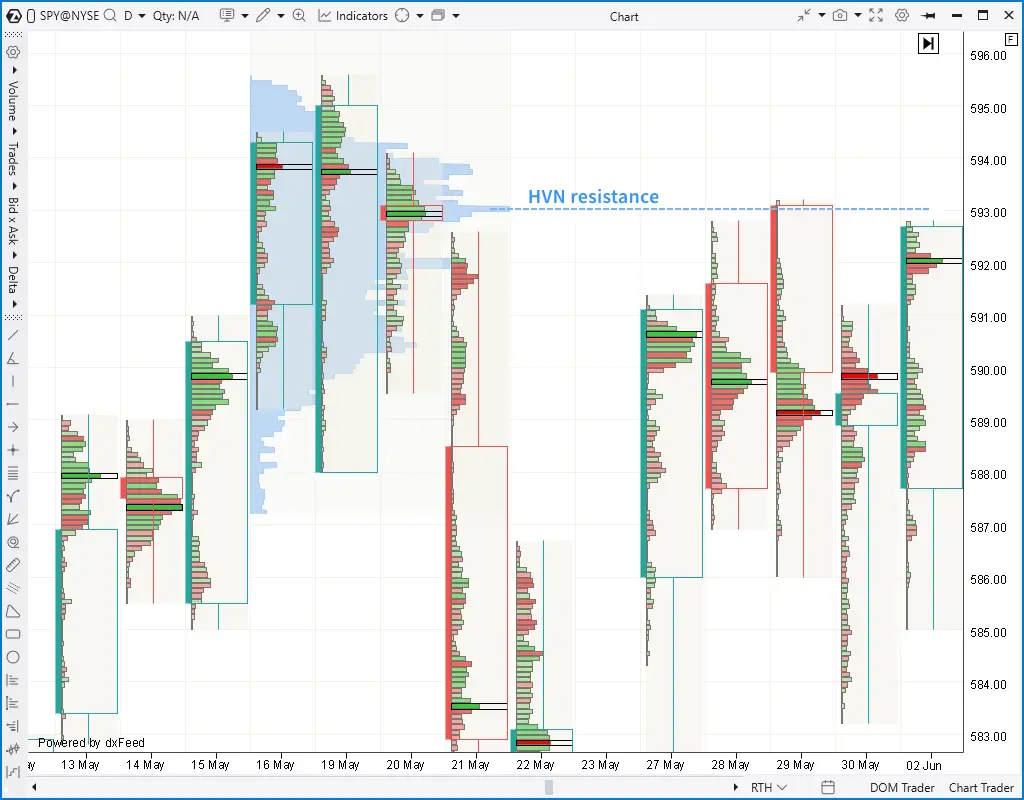
During the negotiation, everyone usually focuses on the price, but the volume often does not get the same headlamp, although it can tell you a lot. While the price tells you where the market is located, the volume tells you how strong this move is. It’s the power behind the candles. Whether you market professionally, fast scalping, or just investing, understanding how to read and use volume can really improve your choices.
Traders are often based on specialized platforms that exceed standard mapping. The ATAS is specifically designed for deep volume and order details. Bookmap is known for real -time liquidity illustrations. Ninjatrader offers advanced execution tools. Each of these platforms serves different styles, but all provide a deeper picture of volume behavior.
In this article, we reject the role of volume in shares, explain basic standards and concepts and provide a practical framework to use it.
What is volume in transactions?
The volume represents the total number of shares, contracts or units exchanged within a given time frame. It is one of the most basic measurements available, but it is also one of the most powerful. The volume gives you a picture of how interesting there is in a price move.
The large volume shows strong participation – buyers and sellers are active and committed. Low indices may suggest apathy, indecision or lack of conviction. It is important that the volume is objective: unlike many indicators from the price, the volume is raw data.
Because the analysis of trading volume matters
Understanding the volume can help you answer basic questions such as:
- Is this unbearable to continue?
- Is it a reversal preparation under the surface?
- Do institutions enter or leave a position?
The tumor does not provide a crystalline sphere, but helps to validate or cause price action. It acts as a confirmation tool: Price movements in large volume are more reliable than those in low volume. For example, if a stock breaks out of the resistance to an unusual intense volume, it is more likely to maintain the movement.

“When traders carefully examine the volume – using organs such as cluster diagrams, imprints or cumulative delta – they can get a clearer, more independent view of what is really going on. I believe that I give traders tools to see what the market is moving:
– Denis Ivashchenko, CEO of ATAS
Tumor as a confirmation tool
Let’s say a stock breaks over a level of resistance basal. Do you have to jump?
The tension helps you decide. An increasing volume unblocks implies genuine interest in market – possibly institutional participation. This is a positive sign. But if unblocking occurs in the volume of light, it can be a false movement, driven by the lack of sellers rather than true demand.
The same logic applies to disasters. Heavy volume in a drawback of disadvantage can confirm the strong sales pressure, while the dip in weak volume could only be noise.
In other words, it confirms the belief – or its lack.
Volume spikes and what they reveal
Tumor spikes are sudden increases in commercial activity that stand out from average. These spikes can signal:
- Tops: Final overvolves in a trend, often followed by reversals.
- Breakouts: transitions from rows, signaling a possible voltage onset.
- News events: Reactions to profits, titles or macroeconomic developments.
The frame is important. A spike of volume in a long green candle after an upward course can mean exhaustion. A spike in a unblocking from integration can mark the start of something new. Traders should always ask: Is the volume spike that happens at the beginning, in the middle or the end of a movement?
Volume deviation: A warning signal
Tumor deviation occurs when the direction of prices movement is not aligned with changes in transaction volume. For example, if the price makes higher high, but the volume decreases, this is a red flag. Suggests that the match is exhausted.
Similarly, if the price drops, but the volume fades, the sale pressure can be weakened, indicating possible bounce.
Tumor deviation does not always mean that the voltage will turn, but it can be a heads-up to stay alert or get ready for a possible change.
Analysis and Support of Transaction Tumor
High-volume areas are called high volume nodes-they are very much interested in market activity and interest in the market. These zones often become support or resistance. For example, if a stock has been largely negotiated about $ 50, it means that there are many transactions – buyers and sellers agree on value. If the price falls and returns to $ 50, this level can act as support. On the contrary, it could be resistance to the road upwards.
The volume profile tools, which exhibit the volume they negotiate by price and not over time, are particularly useful here. They point out where people were more involved, which could be a sign of points that could see good participation again.

Tumor analysis within
For day traders, volume is not just a confirmation tool – it is part of the commercial installation itself. Volume standards can reveal:
- When liquidity enters or leaves the market.
- If a move is driven by large players or small retail flows.
- How the market reacts to specific events or levels of news.
An important idea is the average value of the volume (VWAP). It shows the average price that is weighted by volume throughout the day. Many traders and institutions use VWAP as a reference point for fair value. Transactions performed near VWAP are considered more effective. If the price is above the vwap, the feeling of the day can be inflated – down, bearish.
Scalpers also combine order resolution with volume clusters to determine short -term pressure points.
Volume -based indicators
While raw volume data is strong in themselves, some traders prefer volume -based indicators to simplify the interpretation. Some commonly include:
- Balance volume (OBV): monitors the cumulative volume and compares it with the price direction.
- Accumulation/distribution line: Similar to OBV, but adapts to the position of the wax price closure.
- Volume oscillators: It measures the difference between short and long -term media.
- Money flow index (MFI): Combines volume and value in a momentum indicator.
These indicators try to record the underlying condemnation of price movements, though, like all indicators, they should be used in the context.
Practical tips for using volume in your transactions
- Combine the volume with price standards. Use the volume to validate breakouts, disasters, flags, triangles and consolidations. Do not exchange volume in isolation.
- Focus on a relative volume. What matters is not just today’s volume – it’s how it compares to the recent history. An average unblocking can be weak. The same movement in 200% of the normal volume is stronger.
- Watch for traps. Be careful about fake breakouts in low volume or exhaustion with tumor spikes. The volume should confirm the direction of movement, not contradict it.
- Get to know your timetable. Endered traders should monitor the intensity of the medium per minute. Swing dealers can be more based on daily or weekly volume bars and profile zones.
- Volume of study at basic price levels. Combine your order flow resolution with support/resistor or moving averages. Tumor increases in these zones can provide high probability entries.

Tumor restrictions
While the volume is incredibly useful, it is not infallible:
- In some markets (especially encryption or OTC stocks), it can handle or mislead.
- Dark pools and off -exchange transactions may not appear in traditional volume data.
- The volume should never overridge risk management. It’s a signal, not a guarantee.
Finally, the volume works best as part of a wider tool – along with the action, structure, framework and price confirmation.
Thoughts about the clarity of the market
Tumor is often misunderstood or ignored by younger traders, but is one of the most reliable and honest market measurements. Reflects the actual activity – the push and attraction between supply and demand.
This type of insight on the market is made possible with the help of specialized platforms, which offer advanced tools such as ordering ordering or liquidity mapping. Among them, the Atas volume analysis software It stands out for all the advanced features-by dedicated to commercial complex diagrams, opinions of imprints and real-time data on the actions of large market participants. Learning volume understanding can help you filter out false movements, identify high condemnation settings and have your most effective entries. In today’s markets, speed alone is not enough. Professional traders want depth – visibility in what really moves the price.

